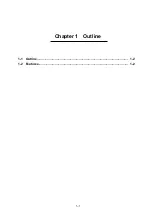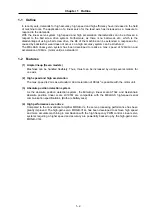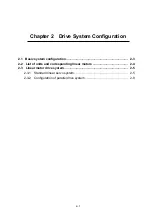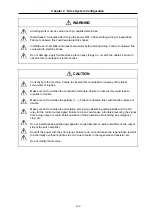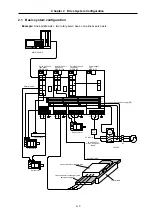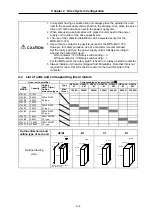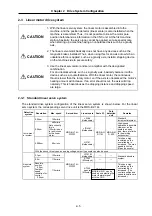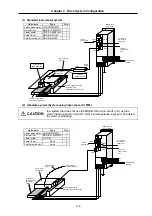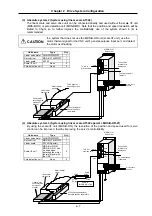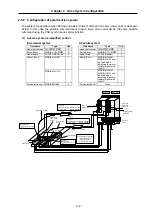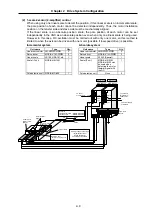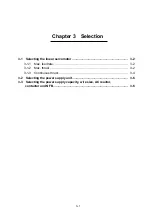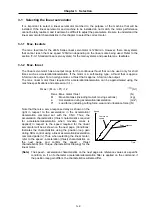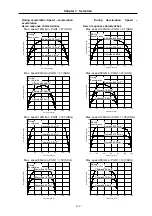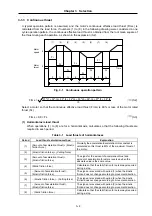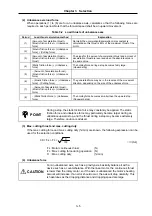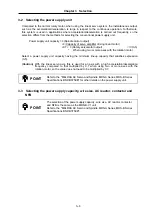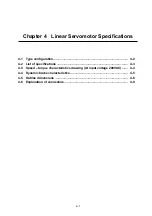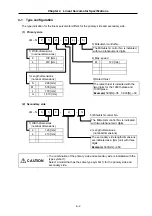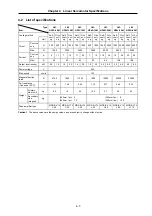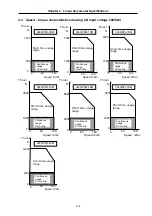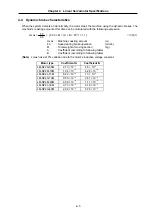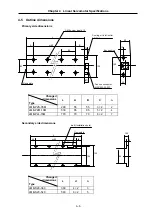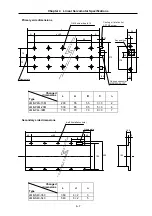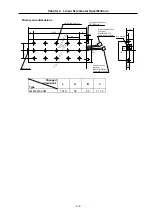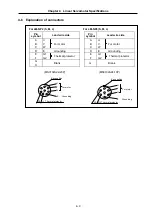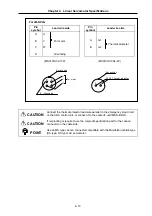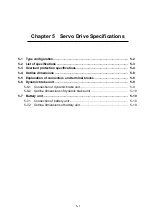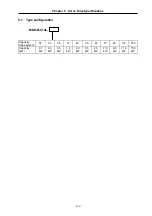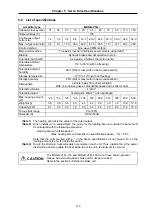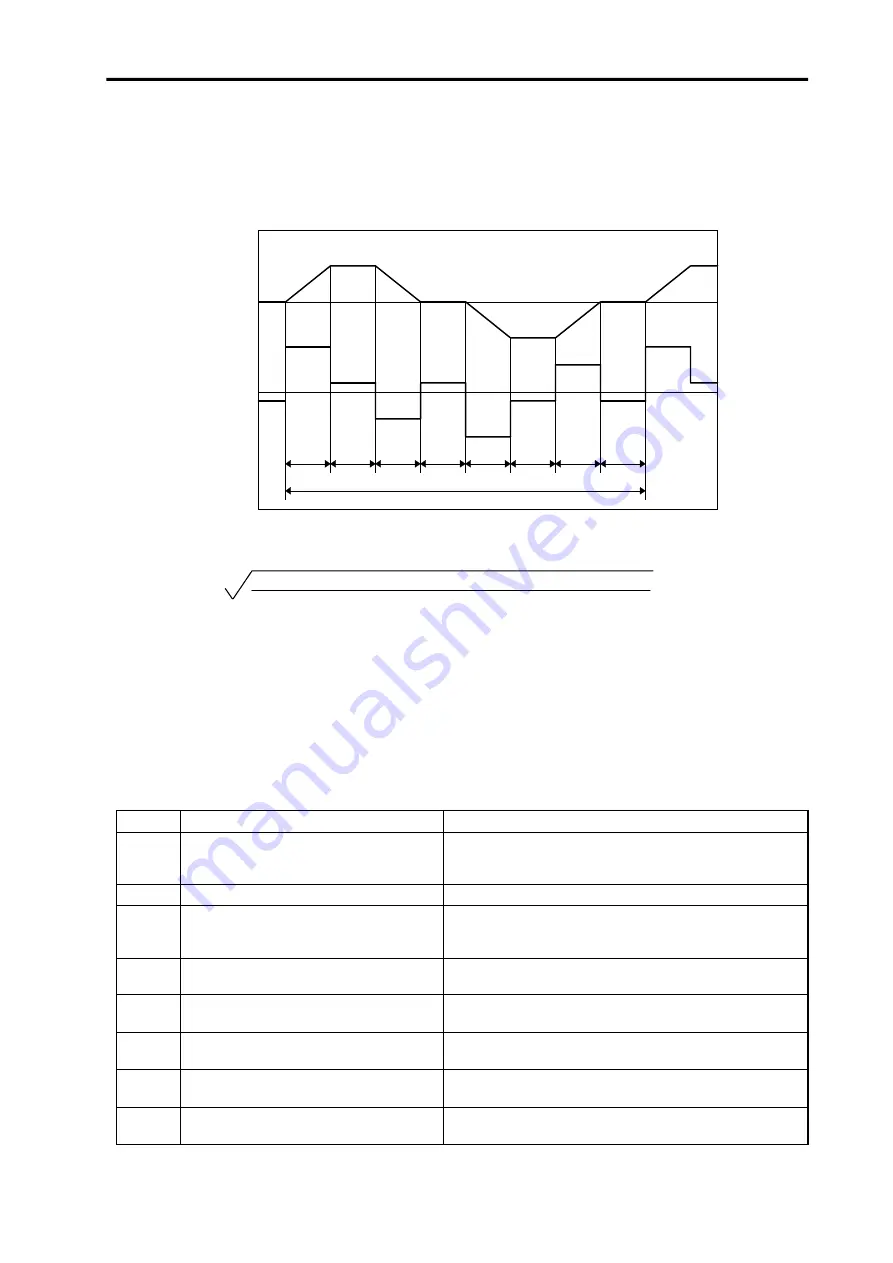
Chapter 3 Selection
3–4
3-1-3 Continuous thrust
A typical operation pattern is assumed, and the motor's continuous effective load thrust (Frms) is
calculated from the load force. If numbers (1) to (8) in the following drawing were considered a one
cycle operation pattern, the continuous effective load thrust is obtained from the root mean square of
the thrust during each operation, as shown in the expression (3-2).
Motor
thrust
Motor
speed
0
0
F
3
F
2
t
1
t
2
t
3
t
4
t
0
F
1
Time
F
4
F
5
F
6
F
7
F
8
t
5
t
6
t
7
t
8
(1)
(2)
(3)
(4)
(5)
(6)
(7)
(8)
Fig. 3-1 Continuous operation pattern
Frms =
F1
2
·t1 + F2
2
·t2 + F3
2
·t3 + F4
2
·t4 + F5
2
·t5 + F6
2
·t6 + F7
2
·t7 + F8
2
·t8
t0
・・・
(3-2)
Select a motor so that the continuous effective load thrust (Frms) is 80% or less of the motor rated
thrust (Fs).
Frms
≤
0.8 × Fs
・・・
(3-3)
(1) Horizontal axis load thrust
When operations (1) to (8) are for a horizontal axis, calculate so that the following thrusts are
required in each period.
Table 3-1 Load thrusts of horizontal axes
Period
Load thrust calculation method
Explanation
(1)
(Amount of acceleration thrust) + (Kinetic
friction force)
Normally the acceleration/deceleration time constant is
calculated so this thrust is 80% of the maximum thrust of
the motor.
(2)
(Kinetic friction force) + (Cutting force)
(3)
(Amount of deceleration thrust) +
(Kinetic friction force)
The signs for the amount of acceleration thrust and
amount of deceleration thrust are reversed when the
absolute value is the same value.
(4)
(Static friction force)
Calculate so that the static friction force is always required
during a stop.
(5)
−
(Amount of acceleration thrust)
−
(Kinetic friction force)
The signs are reversed with period (1) when the kinetic
friction does not change according to movement direction.
(6)
−
(Kinetic friction force)
−
(Cutting force)
The signs are reversed with period (2) when the kinetic
friction does not change according to movement direction.
(7)
−
(Amount of deceleration thrust)
−
(Kinetic friction force)
The signs are reversed with period (3) when the kinetic
friction does not change according to movement direction.
(8)
−
(Static friction force)
Calculate so that the static friction force is always required
during a stop.

